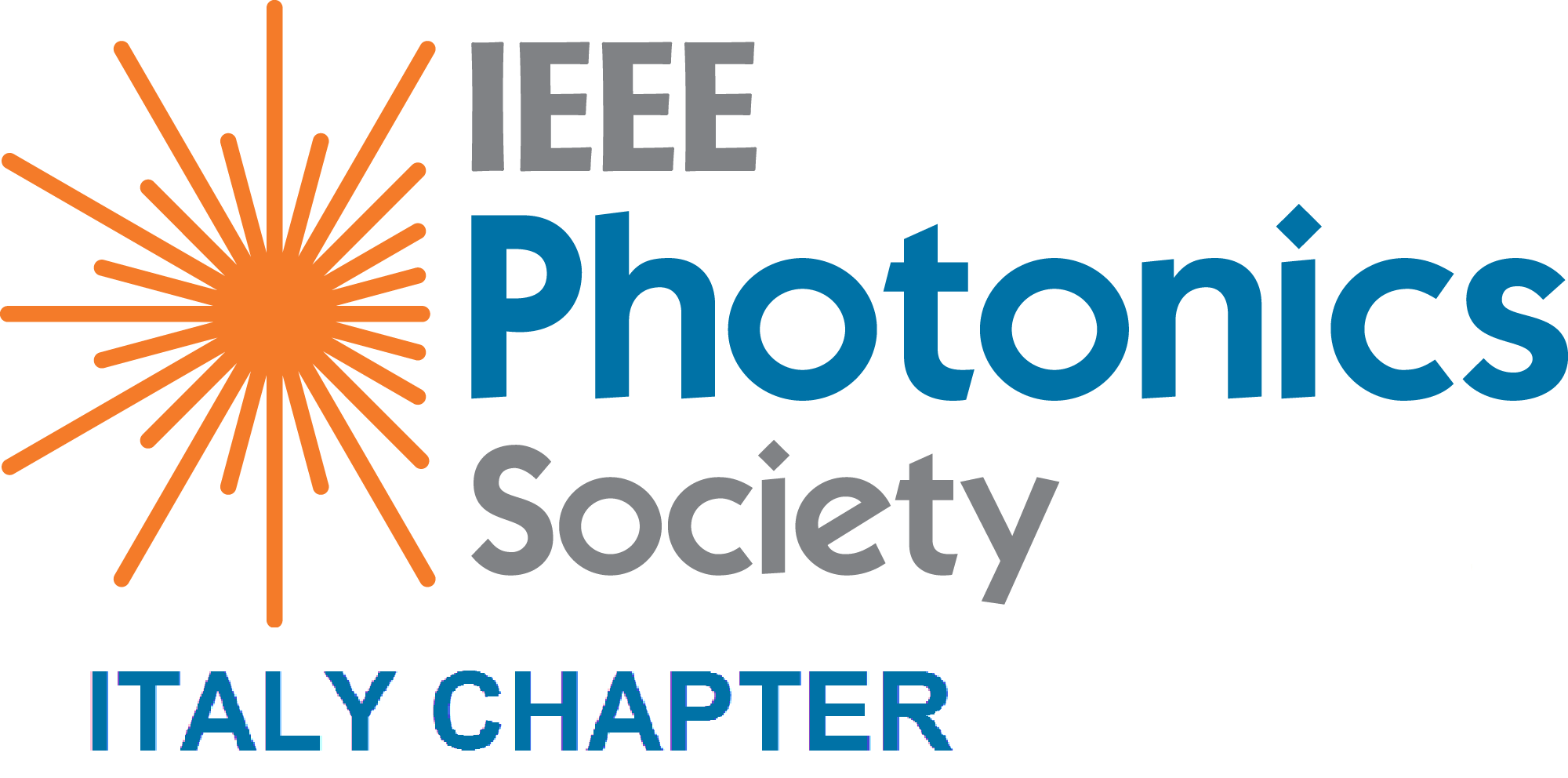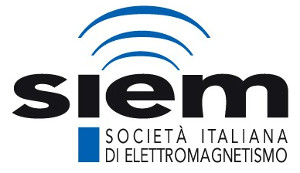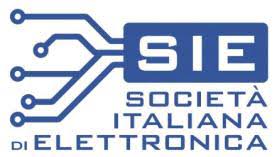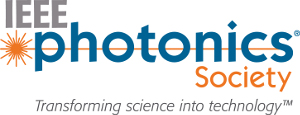Thursday 10 September
| Tuesday, September 8 | Wednesday, September 9 | Thursday, September 10 | Friday, September 11 |
| Thursday, September 10, 2020 |
|
Session A7 - Nano and Microstructures 8:30 – 9:50 Chair: Francesco Matera |
||
|
8:30 – 8:40 “METAMORPHOSIS OF NANOSTRUCTURED LENSES: HYBRIDIZATION AND FREE-FORM METALENSES FOR TOTAL ANGULAR MOMENTUM CONTROL” Filippo Romanato 1,2, Pietro Capaldo1,2, Gianluca Ruffato 1,2 1Department of Physics and Astronomy ‘G. Galilei’, University of Padova, via Marzolo 8, 35131 Padova, Italy 2CNR IOM National Laboratory, S.S. 14 Km 163.5, 34012 Basovizza, Trieste, Italy *filippo.romanato@unipd.it Moving from free-form refractive/diffractive optics to metalenses, novel tools for structuring optical materials are provided for the generation of nanostructured optical layouts. New optics are designed for the control of total angular momentum in structured light beams implementing basic and complex optical operations. 8:40 – 8:50 “WAVELENGTH-SELECTIVE ROBUST FIBER COUPLER FOR HIGH-Q MICRO-RESONATORS” D. Farnesi*1, F. Chiavaioli1, F. Baldini1, S. Berneschi1, S. Soria1, C. Trono1, D. Laneve2, M. C. Falconi2, F. Prudenzano2, G. Nunzi Conti1,3 1 Istituto di Fisica Applicata “N. Carrara”, Consiglio Nazionale delle Ricerche, Sesto Fiorentino (FI), Italy 2 Dipartimento di Energia Elettrica e dell’Informazione, Politecnico di Bari, Via Re David 200, Bari, Italy 3 Centro Fermi, Museo Storico della Fisica e Centro Studi e Ricerche “Enrico Fermi”, 00184 Roma, Italy *d.farnesi@ifac.cnr.it We present results on the implementation of a robust fiber based system able to efficiently and selectively couple light to high-Q whispering gallery mode optical micro-resonators. 8:50 – 9:00 “NOVEL TYPE OF HOLLOW-CORE FIBER: HYBRID FIBER” Fabio Giovanardi1*, Federico Melli2, Jonas H Osorio3, Fetah Benabid3, Luca Vincetti2 1 University of Parma, Department of Engineering and Architecture, Parco Area delle Scienze 181/A, 43124 Parma, Italy 2 University of Modena, Department of Engineering “Enzo Ferrari”, Via P. Vivarelli 10, 41125 Modena, Italy 3 GPPMM Group, Xlim Research Institute, CNRS UMR 7252, University of Limoges, Limoges, France *fabio.giovanardi@unipr.it A novel hollow-core fiber design is proposed for obtaining low loss and effective single-mode operation. Promising results are confirmed by theoretical simulations. 9:00 – 9:10 “QUANTITATIVE NANOSCALE ABSORPTION MAPPING OF TWO DIMENSIONAL MATERIALS” Marco Negri1, Luca Francaviglia1, Dumitru Dumcenco1,2, Matteo Bosi3, Daniel Kaplan4, Venkataraman Swaminathan4, Giancarlo Salviati3*, Andras Kis2, Filippo Fabbri5, Anna Fontcuberta y Morral1 1 Institute of Materials, Faculty of Engineering, EPFL, 1015 Lausanne, Switzerland 2 Electrical Engineering Institute, EPFL, CH-1015 Lausanne, Switzerland 3 IMEM-CNR Institute, Parco Area delle Scienze 37/A, 43124 Parma, Italy 4 U.S. Army RDECOM-ARDEC, Fuze Precision Armaments and Technology Directorate, Picatinny, NJ, USA 5 Nano-CNR Institute c/o Scuola Normale Superiore, Piazza San Silvestro 12, 56127 Pisa, Italy *giancarlo.salviati@cnr.it We develop a novel technique for mapping the absorption properties of 2D MoS2 and MoSe2 monolayers with nanoscale resolution by taking advantage of the underlying substrate cathodoluminescence emission. 9:10 – 9:20 “ALL THE MEASURES YOU CAN’T SEE – THE HARD LIFE OF A SMALL PHOTON” Luca Porcelluzzi*, MKS Instruments – Ophir Brand *Luca.Porcelluzzi@mksinst.com THz radiation sources have become commercially available, enabling the industry to exploit the unique properties of THz waves as it combines both, radio waves and infra-red waves. To pave the way for many more potential THz applications adequate measuring technology is essential. VCSELs today are widely used as light sources in sensing applications. While the benefits of VCSELS are indisputable, and the applications are wide, the development of these systems are still improving with respect to areas such as eye safety, power consumption, and overall system reliability. Knowing how the light source in these systems is behaving is critical to the success of the overall system. 9:20 – 9:30 “HELICAL GOLD NANOPARTICLE ASSEMBLIES: EMERGENCE OF PLASMONIC CHIRALITY” Helical assemblies of gold nanoparticles are prepared on thermoresponsive organic templates, showing circularly dichroism response in the spectral region of the plasmon resonance. 9:30 – 9:40 “LEARNING HIGHLY DISTINCTIVE HOLOGRAPHIC FEATURES BOOSTS MICRO-PLASTICS RECOGNITION IN WATER SAMPLES” Here we combine Digital Holography microscopy with machine learning to identify with high accuracy microplastics within heterogeneous water samples. Highly distinctive coherent features are found to define a fingerprint for plastic items. 9:40 – 9:50 “PHOTONICS-BASED COHERENT DUAL-BAND 2X4 MIMO RADAR SYSTEM” Salvatore Maresca1, Leonardo Lembo1,2, Filippo Scotti3, Giovanni Serafino1, Mirco Scaffardi3, In this paper the first coherent dual-band 2x4 MIMO radar experiment is presented. Range/cross-range maps demonstrate the higher cross-range resolution due to the coherence and the enhanced performance introduced by dual-band operation. |
||
|
Session B7 - Optical Imaging II: Methods and devices 8:30 – 9:50 Chair: Gabriella Cincotti
|
||
|
8:30 – 8:45 Invited paper: “SPECTROSCOPY AND IMAGING WITH AN ULTRA-STABLE COMMON-PATH INTERFEROMETER” Giulio Cerullo – Politecnico di Milano, Milan, Italy
8:45 – 9:00 Invited paper: “NEAR-INFRARED (NIR) ORGANIC LIGHT-EMITTING DEVICES (OLEDS) IN THE “CENTURY OF PHOTONICS” Alessandro Minotto 1 Paul A. Haigh2,3, Łukasz G. Łukasiewicz4, Eugenio Lunedei5, Daniel T. Gryko4, Izzat Darwazeh3, Franco Cacialli1* 1 Department of Physics and Astronomy, and London Centre for Nanotechnology, University College London, Gower Street, London WC1E 6BT, United Kingdom 2 School of Engineering, Newcastle University, Newcastle-upon-Tyne, NE1 7RU, UK 3 Communications and Information Systems, University College London, London, WC1E 6BT, UK 4 Institute of Organic Chemistry, Polish Academy of Sciences, 01-224 Warsaw, Poland 5 ISMN-CNR, Institute for the Study of Nanostructured Materials, 40129 Bologna, Italy *f.cacialli@gmail.com Organic semiconductors still provide a variety of opportunities and challenges for the development of photonics and optoelectronics. Emphasis will be placed on the potential of low-gap organic semiconductors for Near-infrared (NIR) applications.
“HIGH SPEED OCT SYSTEM USING EXTERNAL CAVITY LASER” Aldo Righetti1*, Maria Chiara Ubaldi2, Giorgio Grasso1 We describe a new concept for the implementation of a scanning laser for OCT applications with a capability of more than one spatial point in 1ms thanks to high speed E/O materials in a tunable etalon. 9:10 – 9:20 “COMPACT MODULES FOR DIGITAL HOLOGRAPHIC MICROSCOPY IN MICROFLUIDICS” Melania Paturzo1*, Teresa Cacace1, Vittorio Bianco1, Vito Pagliarulo1, Biagio Mandracchia1, Pietro Ferraro1 *m.paturzo@isasi.cnr.it We present a compact and cost-effective imaging module, implementing the interferometer architecture for off-axis digital holography on a commercial microfluidic chip and using a laser diode as light source. 9:20 – 9:30 “DYNAMICS OF OPTICAL VORTICES IN SPECKLE PATTERNS WITH SUBNANOMETRIC SPECTRAL RESOLUTION” A. Di Donato*, D. Mencarelli, G. Fabi, E. Pavoni, H. J. Christopher, L. Pierantoni, A. Morini, M. Farina Dipartimeto di Ingegneria dell'Informazione, Università Politecnica delle Marche, Via Brecce Bianche 60131 Ancona, Italy *a.didonato@univpm.it@univpm.it By exploiting a novel quantitative imaging technique based on Synthetic Optical Holography, we describe with nanometric spectral resolution the dynamic behaviour of optical vortices in a speckle pattern varying the laser wavelength. 9:30 – 9:40 “PROTON BRAGG-CURVE IMAGING BY RADIOPHOTOLUMINESCENCE OF LITHIUM FLUORIDE THIN FILM RADIATION SENSORS” R.M. Montereali1, A. Ampollini1, S. Libera1, E. Nichelatti2, V. Nigro1, L. Picardi1, M. Piccinini1, C. 1 ENEA C.R. Frascati, Fusion and Technologies for Nuclear Safety and Security Department, Via E. Fermi 45, 00044 Frascati (Rome), Italy 2 ENEA C.R. Casaccia, Fusion and Technologies for Nuclear Safety and Security Department, Via *rosa.montereali@enea.it Passive solid state radiation detectors based on the visible radiophotoluminescence of colour centres in lithium fluoride thin films grown on silicon substrates are investigated for imaging of full proton Bragg curves by fluorescence microscopy. 9:40 – 9:50 “PHOTOVOLTAIC MANIPULATION ON LN SURFACE: POLYMER, PARTICLES AND BIOLOGICAL SAMPLES” 1 Institute of Applied Sciences and Intelligent Systems ISASI-CNR, 34 Via Campi Flegrei, Pozzuoli (NA), Italy Interplay between biological samples and Photovoltaic (PV) crystals opens new possibility in smart materials science. Cellular behaviors can be modified by DEP forces on PV surfaces. Living samples actively modify the electric-field inside PV substrates. |
||
|
9:50 – 10:15 Break
|
||
|
Session A8 - Optical Sensing II: Physical sensing and components for optical sensing 10:15 – 11:05 Chair: Antonio d’Alessandro |
||
|
10:15 – 10:25 “FIBER OPTIC SENSOR FOR RIVER LEVEL MONITORING” Fiber Bragg Gratings (FBGs) were exploited in a laboratory scaled-levee demonstrating the feasibility of fiber optic sensors to detectdeformations of the levee body in response to water infiltration. 10:25 – 10:35 “TEMPERATURE SENSING WITH A BICHROMOPHORIC MACROCYCLE THROUGH FLUORESCENCE ENERGY TRANSFER” Francesca Terenziani*, Brunella Bardi, Irene Tosi, Federica Faroldi, Laura Baldini, Francesco Sansone Dipartimento di Scienze Chimiche, della Vita e della Sostenibilità Ambientale, Università di Parma, Parco Area delle Scienze 17/A, 43124 Parma, Italy * francesca.terenziani@unipr.it We report the first macrocycle-based ratiometric molecular thermometer exploiting the conformational thermosensitivity of a calixarene functionalized with two different chromophores performing fluorescence energy transfer. 10:35 – 10:45 “ORGANIC LIGHT-EMITTING TRANSISTOR AS NANOSCALE LIGHT SOURCE FOR OPTICAL SENSING” We report on the definition and engineering of a new detection scheme to be use in optical biosensing by the unprecedented exploitation of inherent features of the organic optoelectronics and nanoplasmonics technologies building the overall system. 10:45 – 10:55 “SEGMENTED-WAVE ANALYSIS OF NANO-GRATINGS ON CURVED SURFACES” Muhammad Fayyaz Kashif1,*, Filippo Pisano2, Antonio Balena2,3, Marco Pisanello2, Tiziana Stomeo2, Massimo De Vittorio2,3, Ferruccio Pisanello2, Antonella D’Orazi o1 and Marco Grande1 1 Dipartimento di Ingegneria Elettrica e dell’Informazione, Politecnico di Bari, Bari, 70125, Italy 2 Fondazione Istituto Italiano di Tecnologia, Center for Biomolecular Nanotechnologies, Arnesano (LE), Italy *muhammadfayyaz.kashif@poliba.it In this paper, we investigate the gold nano-gratings on curved surfaces through numerical simulations. This study can be helpful to understand curvature induced effects in plasmonic devices. 10:55 – 11:05 “LAB-ON-FIBER ACCELEROMETERS BASED ON FIBER TIP OPTO-MECHANICAL CAVITIES” We developed “Lab on fiber” accelerometers based on micro-opto-mechanical cavities on the optical fiber tip. Cantilever and membrane based accelerometers were designed to operate in different frequency ranges. The performances of the fabricated probes have been characterized and the results are here discussed. |
||
|
Session B8 - Poster 2 10:15 – 11:30 Chair: Giovanni Tartarini |
||
|
“EFFICIENT SOLUTION OVERCOMING BIMODAL PROPAGATION IN 850NMVCSEL-BASED RADIO OVER G.652-FIBRE SYSTEMS” Conveniently exploiting commercial couplers designed for 1550nm, a Radio-over-Fibre link efficiently operating at 850nm over the standard G.652 single mode fibre is presented. Additional features entailed by the proposed solution are highlighted “VERIFYING AN OPTICAL RECIRCULATION LOOP APPLICATION IN ADVANCED PHOTONICS-BASED MICROWAVE DEVICES” Using modeling in VPIphotonics Design Suite and experimental verification, a detailed analysis of optical recirculation loop application in two key photonics-based microwave devices, such as a comb generator and super-wideband time-delay assembly, is carried out. “TM:ER:YB:HO AMPLIFIED SPONTANEOUS EMISSION SOURCE OPERATING FROM 1480 NM TO 2100 NM” Antonella Maria Loconsole1, Mario Christian Falconi1, Dario Laneve1, Vincenza Portosi1, Stefano Taccheo2,3, Francesco Prudenzano1* 1 Department of Electrical and Information Engineering, Politecnico di Bari, via E. Orabona 4, 70125 Bari, Italy 2 Laser Group, Swansea University, Bay Campus, Swansea SA2 8PP, United Kingdom 3 Department of Electronics and Telecommunications, Politecnico di Torino, Corso Duca degli Abruzzi 24, 10129 Torino, Italy *francesco.prudenzano@poliba.it A theoretical model of an amplified spontaneous emission source based on a Tm:Er:Yb:Ho co-doped germanate glass is presented. Preliminary results show that a broad spectrum ranging from 1480 nm to 2100 nm is obtained. “RELATIVE INTENSITY NOISE MEASUREMENTS OF FEMTOSECOND LASER BEAMS IN SRS MICROSCOPE” 1 CHT @Erzelli, Nanoscopy, Istituto Italiano Di Tecnologia, Genova, Italy 2 National Research Council (CNR), Institute for Microelectronics and Microsystems, Napoli, Italy 3 Department of Physics, University of Genova, Genova, Italy *rajeev.ranjan@iit.it In this paper relative intensity noise measurements of three femtosecond laser sources, a Ti:Sapphire (Ti:Sa) oscillator, a femtosecond synchronized optical parametric oscillator (OPO) and a second Harmonic Generator (SHG), are reported and discussed.
“MULTIPHYSICS MODELLING OF PLASMONIC ORGANIC HYBRID E/O MODULATORS” M. Ghomashi1, A. Tibaldi1,2*, F. Bertazzi1,2, M. Vallone1, M. Goano1,2, G. Ghione1 1 Department of Electronics and Telecommunications, Politecnico di Torino, 10129 Turin, Italy 2 IEIIT-CNR C/O Politecnico di Torino, 10129 Turin, Italy *alberto.tibaldi@polito.it The abstract describes a coupled electrical-optical multiphysics simulation approach for Plasmonic Organic Hybrid Electro/Optic modulators. The simulated modulator figures of merit (I/O and frequency response) are discussed and compared with experimental results from the literature. “WRITE-ONCE-READ-MANY (WORM) MEMORY DEVICE USING ECO-FRIEND INP/ZNS QUANTUM DOTS AND PVK COMPOUNDS” This paper is about write-once-read-many (WORM) memory device based on InP@ZnS quantum dots. Proposed memory device showed an 4.5☓103 of ON/OFF ratio at -0.5 V and maintained same on/off ratios for more than 100 hours. “HIGH SENSITIVE PBS QDS BASED SHORTWAVE INFRARED PHOTODETECTOR USING ZNO NPS” PbS SWIR photodetectors with and without ZnO NPs were fabricated and their current–voltage (I–V) characteristics were measured. The maximum on/off ratio of the former was 1.946 times that of the latter. “THERMALLY ACTIVATED DELAYED FLUORESCENCE: EXCITED STATE ENGINEERING” Recent results on fluorescent materials for organic LED based on thermally activated delayed fluorescence (TADF) are summarized. “CHARACTERISATION OF MICROSCOPICAL ANISOTROPY OF BIOLOGICAL TISSUES BY POLARIZATION IMAGING” Sidra Batool1, Mehwish Nisar1, Fabrizio Frezza2, Fabio Mangini3, Eugenio Fazio1* We have characterized anisotropic biological media by performing polarisation imaging. The optical anisotropy degree can be measured by the images. High resolution on the microscopic and nanoscopic alignment of structured media is characterized. “DESIGN AND TEST OF SILICON PHOTONIC MACH-ZEHNDER INTERFEROMETERS FOR DATA TRANSMISSION APPLICATIONS” Davide Badoni1, Vincenzo Bonaiuto2, Mauro Casalboni2, Fabio De Matteis2, Giovanni Di Giuseppe3, Luca Frontini4, Roberto Gunnella3, Valentino Liberali5, Andreas Mai6, Giovanni Paoluzzi1, Paolo Prosposito2, Andrea Salamon1*, Gaetano Salina1, Matteo Salvato2, Fausto Sargeni2, Sigurd Schrader7, Alberto Stabile5, Patrick Steglich6 1 INFN Structure of Rome Tor Vergata, Rome, Italy 2 University of Rome Tor Vergata, Rome, Italy 3 University of Camerino, Macerata, Italy 4 INFN Structure of Milano, Milan, Italy 5 University of Milano, Milan, Italy 6 IHP – Innovations for High Performance Microelectronics, Frankfurt (Oder), Germany 7 Technical University of Applied Sciences Wildau, Wildau, Germany *andrea.salamon@roma2.infn.it Silicon photonics is a rapidly emerging field in research and technology. Given its high diffraction index and low dispersion, silicon is an high quality optical material. On the other hand, VLSI CMOS compatible processes allow to design reliable photonic structures which can be easily integrated with standard integrated electronic circuits at affordable prices. Optical modulation is obtained in silicon photonic circuits with electro-optical effect (plasma dispersion) in two different kind of structures: the Mach-Zehnder interferometer and the ring resonator. “AMORPHOUS SILICON IN-LINE PHOTODETECTOR FOR INTEGRATED PHOTONICS APPLICATIONS” Nina Codreanu*, Maziyar Milanizadeh, Andrea Melloni, Francesco Morichetti We report on the tunability of the optical properties of amorphous silicon (a-Si), its integration on a photonic platform and operation as a visible range photodetector. We present the details on the experimental methods, optimization procedure, design, fabrication techniques and experimental characterization of the present photodetector operating over the optical gap bandwidth up to 700 nm wavelength.
|
||
|
11:30 – 11:45 Break
|
||
|
Session A9 - Nonlinear Optics 11:45 – 13:20 Chair: Costantino De Angelis
|
||
|
11:45 – 12:00 Invited paper: “NONLINEAR FREQUENCY CONVERSION IN DIELECTRIC METASURFACES” Neshev Dragomi – Department of Electronic Materials Engineering, Australian National University
12:00 – 12:10 “NANOFABRICATION OF SILICON METASURFACES FOR THIRD HARMONIC GENERATION” Luca Fagiani1*, Erfan Mafakheri1, Kirill Okhlopkov2, Andrea Tognazzi3, Attilio Zilli4, Michele 1 IFN-CNR, LNESS laboratory, via Anzani 42, 22100 Como, Italy 2 Faculty of Physics, Lomonosov Moscow State University, Moscow 119991, Russia 3 Department of Information Engineering, University of Brescia, Via Branze38,25123 Brescia, Italy 4 Physics Department, Politecnico di Milano, Piazza Leonardo Da Vinci 32, 20133 Milano, Italy *luca.fagiani@polimi.it We realized high quality silicon metasurfaces by e-beam lithography for controlling the spatial intensity distribution, polarization, and wavelength dependence of light beams generated by third-order nonlinearities. 12:10 – 12:20 “BOOSTING THIRD HARMONIC GENERATION IN SILICON METASURFACES” Andrea Tognazzi1,2*, Кirill Okhlopkov3, Attilio Zilli4, Davide Rocco1,2, Michele Celebrano4, Maxim R.Shcherbakov3, Monica Bollani5, Erfan Mafakheri5, Luca Fagiani5, Marco Finazzi4, Andrey 1 Department of Information Engineering, University of Brescia, Via Branze 38, 25123 Brescia, Italy 2 CNR-INO (National Institute of Optics), Via Branze 45, 25123 Brescia, Italy 3 Faculty of Physics, Lomonosov Moscow State University, Moscow 119991, Russia 4 Department of Physics, Politecnico di Milano, Piazza Leonardo Da Vinci 32, 20133 Milano, Italy 5 Istituto di Fotonica e Nanotecnologie-Consiglio Nazionale delle Ricerche, Laboratory for Nanostructure Epitaxy and Spintronics on Silicon, LNESS, Via Anzani 42, 22100 Como, Italy *a.tognazzi007@unibs.it In this work we propose a high-quality factor semiconductor nanoparticles array made of rectangular silicon waveguides. Our optimized metasurface can dramatically boost the third harmonic generated signal. 12:20 – 12:30 “STUDYING OF MULTIPLE-PEAKED SECOND HARMONIC GENERATION EMISSION IN SILICON WAVEGUIDE WITH INTERDIGITATED CONTACTS” In this work we will report on second harmonic generation and on the influence of the variations of the sample geometry in periodically poled silicon waveguides. 12:30 – 12:40 “SEMICONDUCTOR METASURFACE REFRACTIVE INDEX SENSING VIA OPTICAL RADIATION PATTERN” Marco Gandolfi1,2*, Davide Rocco1,2, Andrea Tognazzi1,2, Luca Carletti2,3, Camilla Baratto1, Costantino De Angelis 1,2 1 CNR-INO (National Institute of Optics), Via Branze 45, Brescia, Italy 2 Department of Information Engineering, University of Brescia, Via Branze 38, Brescia, Italy 3 Department of Information Engineering, University of Padova, Via G. Gradenigo, 6/B, Padova, Italy An innovative sensing mechanism based on the variations in the sensor radiation diagram in correspondence of changes in the refractive index of the surrounding material is illustrated. 12:40 – 12:50 “Advanced measurement tools for nonlinear optics" Paolo Navaretti*, Senior Application Scientist, Zurich Instruments AG. *paolo.navaretti@zhinst.com Zurich Instruments is committed to deliver best-in-class dynamic signal instruments ranging from the medium-frequency (MF) up to the ultra-high-frequency (UHF) ranges. In this talk we present some advanced measurement techniques and tools to get the most out of nonlinear optics experiments 12:50 – 13:00 “MID-INFRARED SECOND HARMONIC GENERATION WITH GE QUANTUM WELLS GROWN ON SI” We present the theoretical investigation and the experimental demonstration of second harmonic generation in the mid-infrared by holedoped Ge/SiGe asymmetric quantum wells. Possible applications in non-linear molecular sensing are discussed. 13:00 – 13:10 “HIGH ENERGY RAMAN SOLITON DYNAMICS IN MULTIMODE GRIN FIBERS” We experimentally observed the fission of high energy femtosecond pulses in a GRIN standard fiber, leading to complex soliton dynamics with huge Raman frequency shifts 13:10 – 13:20 “INVESTIGATION OF LiAl4O6F:Mn PHOSPHORS AS REDEMITTING LIGTH CONVERTERS” Angela Pirri1, Guido Toci2*, Vladimir Makhov3, Nicholas Khaidukov4, Barbara Patrizi2, Maria 1 Istituto di Fisica Applicata “Carrara”, Consiglio Nazionale delle Ricerche, IFAC-CNR, via Madonna del Piano 10, 50019, Sesto Fiorentino, Florence, Italy 2 Istituto Nazionale di Ottica, Consiglio Nazionale delle Ricerche, INO-CNR, via Madonna del Piano 10, 50019, Sesto Fiorentino, Florence, Italy 3 P. N. Lebedev Physical Institute, 53 Leninskiy Prospekt, Moscow, Russia 4 N. S. Kurnakov Institute of General and Inorganic Chemistry, 31 Leninskiy Prospekt, Moscow, Russia *guido.toci@ino.it Ceramic samples of LiAl4O6F phosphors doped with 1.0 mol.% manganese ions synthesizing by high-temperature solid-state reaction technique has been investigated as possible red-emitting light converters. Encouraging results are found.
|
||
|
Session B9 - Emerging topics 11:45 – 12:50 Chair: Federica Poli
|
||
|
11:45 – 12:00 Invited paper: “RF-SPUTTERING FABRICATION OF GLASS-BASED SYSTEMS FOR FLEXIBLE PHOTONICS” Alessandro Chiasera – IFN-CNR-CSMFO Lab. And FBK Photonics Unit, Trento
12:00 – 12:10 “PHOTONIC IMPLEMENTATION OF AN ELEMENTARY UNIT OF ARTIFICIAL INTELLIGENCE BASED ON SOLITONIC WAVEGUIDES” This paper shows the implementation of photonic neuromorphic hardware based on solitonic waveguides able to perform reinforcement learning. Learning is based on recognizing an input state or a specific output that is highlighted by an external supervisor. For this reason, learning can be of two types: supervised or unsupervised. Both have been implemented in the proposed photonic circuit. 12:10 – 12:20 “LOW COST OFDR-BASED DELAY MEASURING SYSTEM FOR THE SQUARE KILOMETRE ARRAY RADIO-TELESCOPE” This paper presents a low-cost delay measuring system based on Optical Frequency Domain Reflectometry (OFDR) to beintegrated in the first prototype of the low frequency subsystem of the Square Kilometre Array radio telescope. 12:20 – 12:30 “PRELIMINARY STUDY ON DIFFUSE OWC FOR INTRA-CUBESAT COMMUNICATION” We experimentally design a diffuse optical wireless communication link for CubeSat applications. We present the bit error rate performance as a function of the received optical power after reflection from the wall. 12:30 – 12:40 “3D PRINTING BY TWO-PHOTON POLYMERIZATION” Fabrication of 3D microstructures by two-photon polymerization is reported. This process exploits femtosecond laser pulses and a photo resist transparent at the laser wavelength (515 nm) that absorbs two photons at high intensity to polymerize. 12:40 – 12:50 “CONICAL MICROSTRUCTURES FOR GUIDING LIGHT IN LAB ON CHIP DEVICES” Here we propose the use of the pyro-electric effect for the fabrication of biocompatible and biodegradable microneedles and the interferometric characterization of the light guided through these microstructures. |









